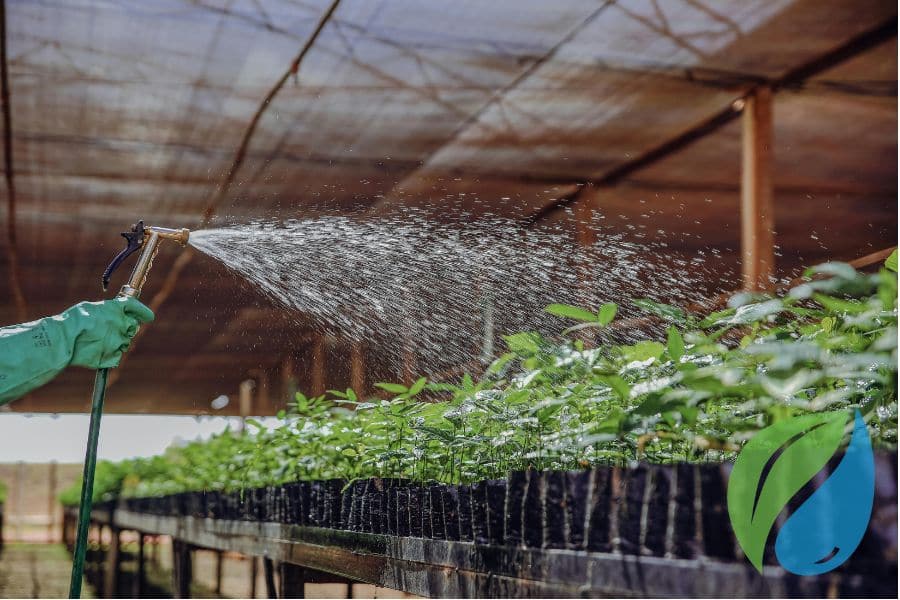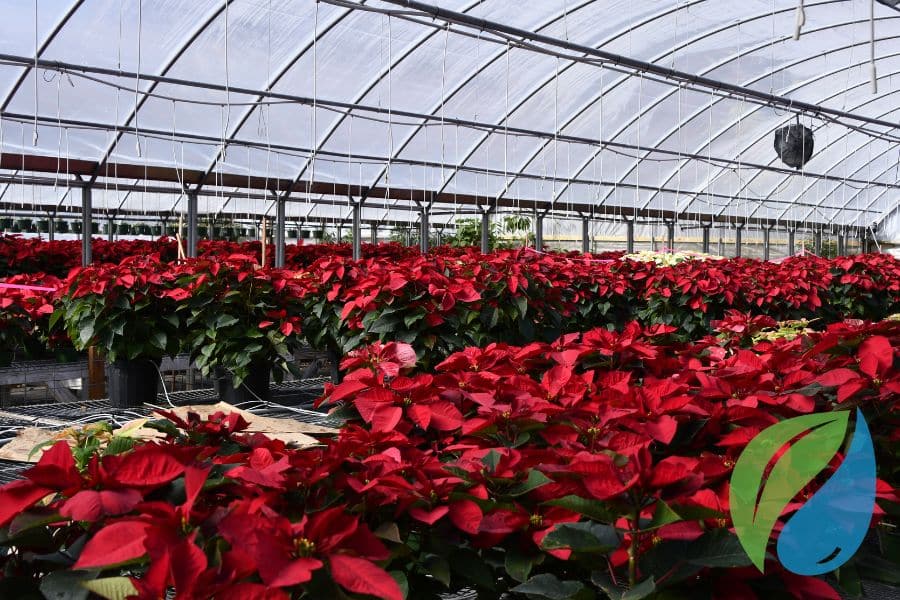The Phyton family of bactericides and fungicides harnesses the plant’s natural process of translocation to improve disease control, working where other products fail.
Our bactericide-fungicide Phyton 35 is safe for food crops and ornamentals. Let’s take a look at how it works and how it can help you cultivate healthier, safer crops at your greenhouse or nursery.
Translocation: The Silver Bullet of Disease Control
Phyton 35 harnesses the power of our flagship product Phyton 27 to provide effective, systemic disease control while being safe for fruit, vegetable, and herb crops. Phyton 35 takes advantage of the plant’s natural process of translocation. Translocation is how a plant moves materials across its entire system, up from the roots, across its structure of leaves, flowers, and fruits, and back down to the roots.
Because Phyton 35 moves through the plant rather than sit on its surface. It is absorbed into the plant to deliver its powerful disease control effects. As a result, it doesn’t leave behind a residue like other products do. This helps you maintain a healthier, more attractive product that is safe for consumers.
Phyton 35 is safe for fruit, vegetable, and herb plants and their open flowers or buds, including:
- Tomatoes
- Peppers
- Cucurbits
- Cruciferous crops
- Eggplants
- Strawberries
- Raspberries
- Blackberries
- Herbs
A Patented Process Developed to Treat Dutch Elm Disease
The patented chemistry that became Phyton 27 and then Phyton 35 was developed at the University of Minnesota to treat Dutch Elm Disease. This devastating disease wiped out many Dutch elm trees in the United States. The systemic process of the chemistry was found to be effective in other plants, too.
Phyton 35 has a low risk of phytotoxicity for most plants when used as directed. It can even be used on most open flowers and buds at lower application rates. We recommend trialing it on a small number of plants with flowers or buds at the intended dosage rate before treating the entire crop.
Implementing Phyton 35 at Your Greenhouse or Nursery
Phyton 35 is an excellent cornerstone product for an integrated pest management (IPM) program. Its broad-spectrum process allows you to control multiple diseases with a single application. It is compatible with many other pesticides, including biopesticides. Phyton 35 can play a key role in microbial resistance as a rotation partner with other chemistries, too.
You can use Phyton 35 in your low-volume equipment as well as tank mix it with many registered pesticides. However, do not mix it with other metals, salts, or horticultural oils. Do not mix Phyton 35 with B-NINE or apply it within 7 days before or after a B-NINE application. Additionally, do not tank mix Phyton 35 with strongly acidic compounds, such as Aliette. Do not apply Phyton 35 within 14 days of Aliette or similar compounds.
Phyton 35 does not require additional surfactant in most applications. If you require additional surfactant, choose a non-ionic product. Phyton 35 is formulated to cover and enter the plant, so it is not compatible with stickers or horticultural oils, as these products reduce absorption and effectiveness while increasing the risk of phytotoxicity.
Phyton 35 has a shelf life of 3 to 5 years when stored above 45 degrees F. Please store your bottle above freezing to ensure its efficacy.
To try Phyton 35 and see the difference in the health and beauty of your plants, place an order through one of our distributors or online today.




